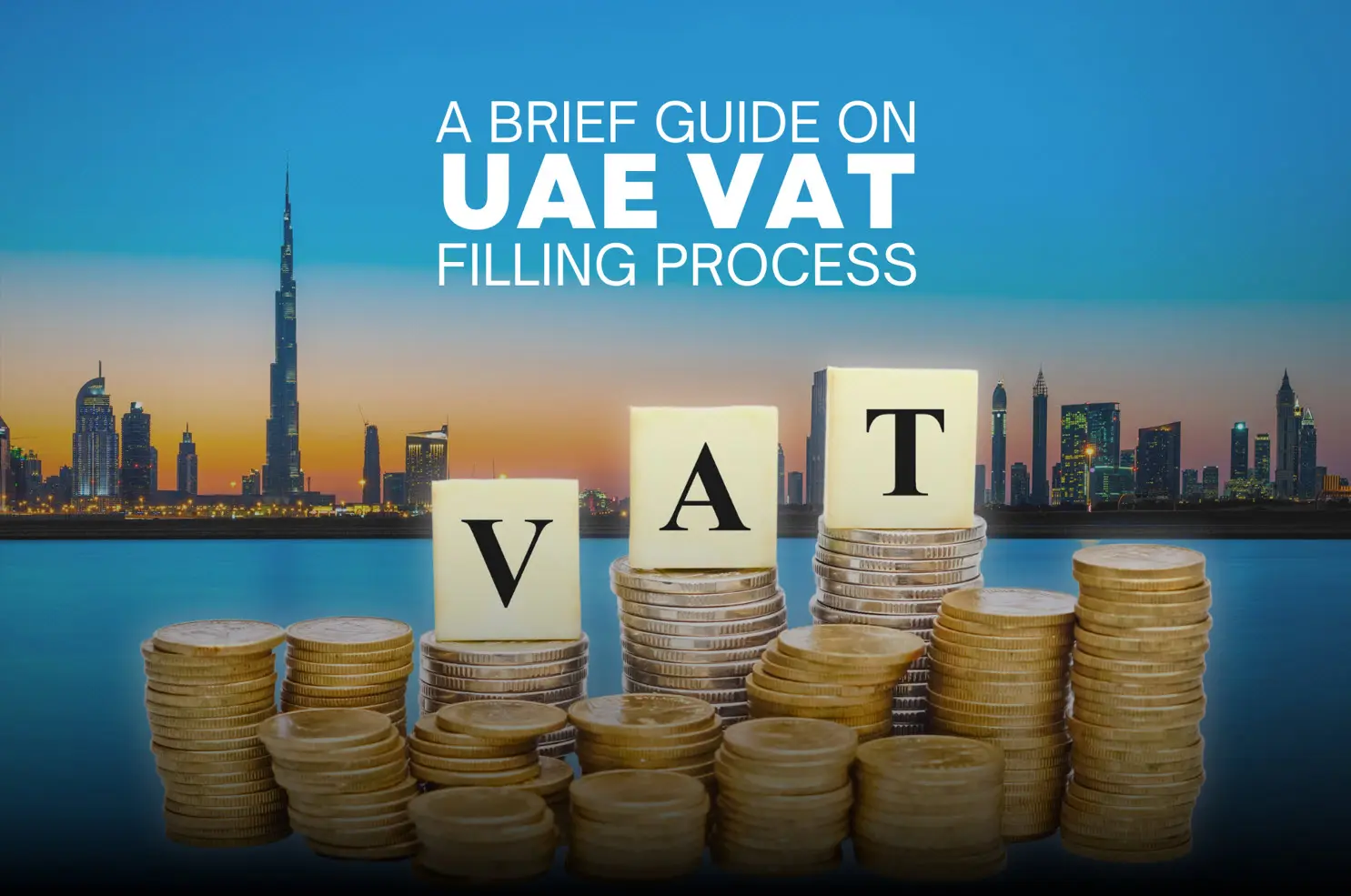Get In Touch
Leave your number and details below and we will call you right away!

Value Added Tax (VAT) is a significant aspect of the UAE's tax, impacting businesses of all sizes. Implemented on January 1, 2018, VAT in the UAE is a consumption tax levied on the supply of goods and services. As a business owner or financial manager, understanding VAT return filing is crucial for ensuring compliance with UAE regulations and avoiding penalties. In this blog, we'll provide a detailed guide on VAT return filing in the UAE.
1. Understanding VAT in the UAE
VAT is a tax imposed on the value added at each stage of the supply chain. Businesses collect VAT from their customers on behalf of the Federal Tax Authority (FTA) and remit it to the government. The standard VAT rate in the UAE is 5%, with some goods and services subject to zero-rated or exempt status.
Businesses with taxable supplies exceeding AED 375,000 annually must register for VAT with the FTA. Optional registration is available for businesses with taxable supplies between AED 187,500 and AED 375,000.
Mandatory Registration: Required for businesses exceeding the threshold.
Voluntary Registration: Available for businesses below the threshold to claim input VAT.
2. VAT Return Filing Process
Filing VAT returns is a crucial responsibility for registered businesses. Here’s a step-by-step guide to the VAT return filing process in the UAE:
Determine the Filing Period: VAT returns must be filed periodically, typically on a quarterly or annual basis. The filing period depends on the size of your business and your registration details; quarterly filing is for businesses with an annual turnover of AED 150 million or less and annual filing: For businesses with an annual turnover exceeding AED 150 million.
Gather Necessary Documents: Before filing your VAT return, ensure you have all required documents and records such as invoices, receipts, Import and export documentation, accounting records, etc.
Prepare Your VAT Return: Using the information gathered, prepare your VAT return. The VAT return form is available through the FTA’s e-Services portal. The form requires:
Total Sales and Outputs: The total amount of sales and VAT collected.
Total Purchases and Inputs: The total amount of purchases and VAT paid on those purchases.
VAT Payable or Refundable: Calculate the difference between VAT collected and VAT paid. If VAT collected exceeds VAT paid, you owe the difference. If VAT paid exceeds VAT collected, you are eligible for a refund.
File Your VAT Return: Submit your VAT return through the FTA’s e-Services portal. Ensure that all details are accurate and complete before submission. The portal will guide you through the submission process and provide confirmation once the return is successfully filed.
Key Deadlines: For quarter filling, VAT returns are due 28 days after the end of each quarter. For example, the return for Q1 (January-March) is due by April 28. For annual filling, VAT returns are due 28 days after the end of the financial year. For example, if your financial year ends on December 31, the return is due by January 28 of the following year.
3. Common Mistakes to Avoid
To ensure accurate VAT return filing and avoid penalties, be aware of these common mistakes:
Inaccurate Data Entry: Ensure all data entered into the VAT return form is accurate and matches your accounting records. Inaccuracies can lead to penalties or audits.
Missing Deadlines: Late submissions can result in penalties. Set reminders for VAT return deadlines and file your returns promptly.
Incorrect Classification of Transactions: Ensure that transactions are classified correctly as taxable, zero-rated, or exempt. Misclassification can lead to incorrect VAT calculations.
Inadequate Record-Keeping: Maintain thorough and organized records of all transactions, invoices, and receipts. Proper documentation supports accurate VAT reporting and compliance.
4. Best Practices for VAT Compliance
To streamline VAT return filing and ensure compliance, consider the following best practices:
Use Accounting Software: Invest in reliable accounting software that integrates VAT calculations and reporting. This helps automate the process, reduce errors, and ensure accurate reporting.
Regularly Review VAT Reports: Regularly review your VAT reports and reconciliation statements to ensure accuracy. Conduct periodic audits of your VAT records to identify and address any discrepancies.
Stay Updated on VAT Regulations: VAT regulations can change, so it’s important to stay informed about any updates or changes to VAT laws. Regularly check the FTA website or consult with a tax advisor for the latest information.
Seek Professional Advice: Consider consulting with a tax advisor or VAT specialist to ensure compliance and optimize your VAT processes.
5. What to Do if You Make a Mistake
If you discover an error in a filed VAT return, you can correct it by:
Submitting an Amendment: File an amended VAT return through the FTA’s e-Services portal to correct any errors or omissions.
Contacting the FTA: If needed, contact the FTA for guidance on correcting errors and understanding any potential penalties.
VAT return filing is a critical aspect of business compliance in the UAE. At Firm Advice, we are committed to helping businesses to be set up in the UAE and maintain compliance. Contact us if you would require our assistance with any corporate or legal services including company formation, POA, Wills, Corporate tax, etc.